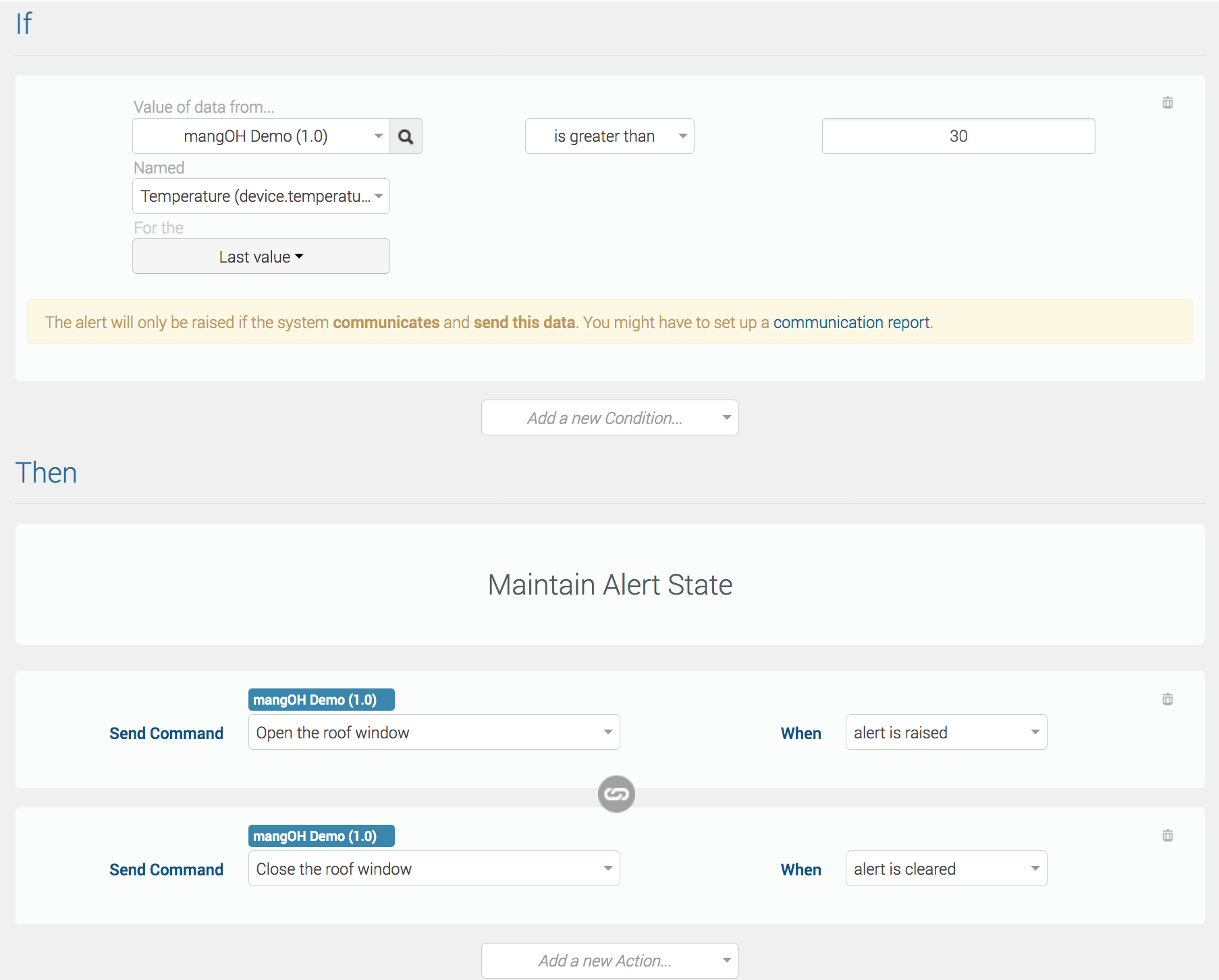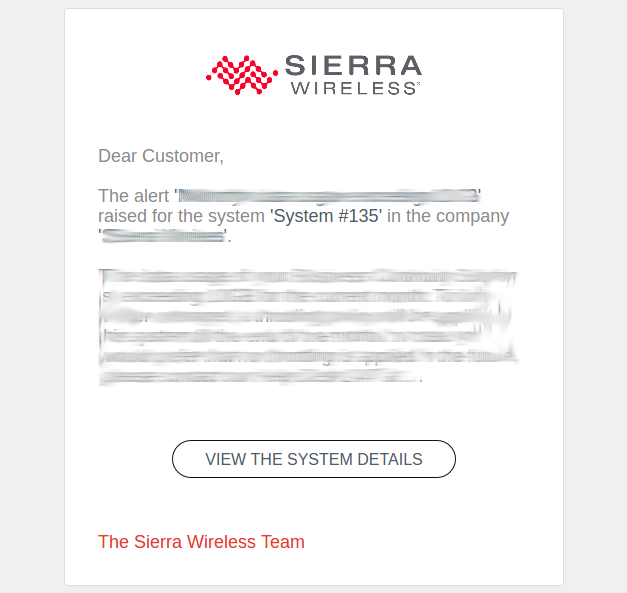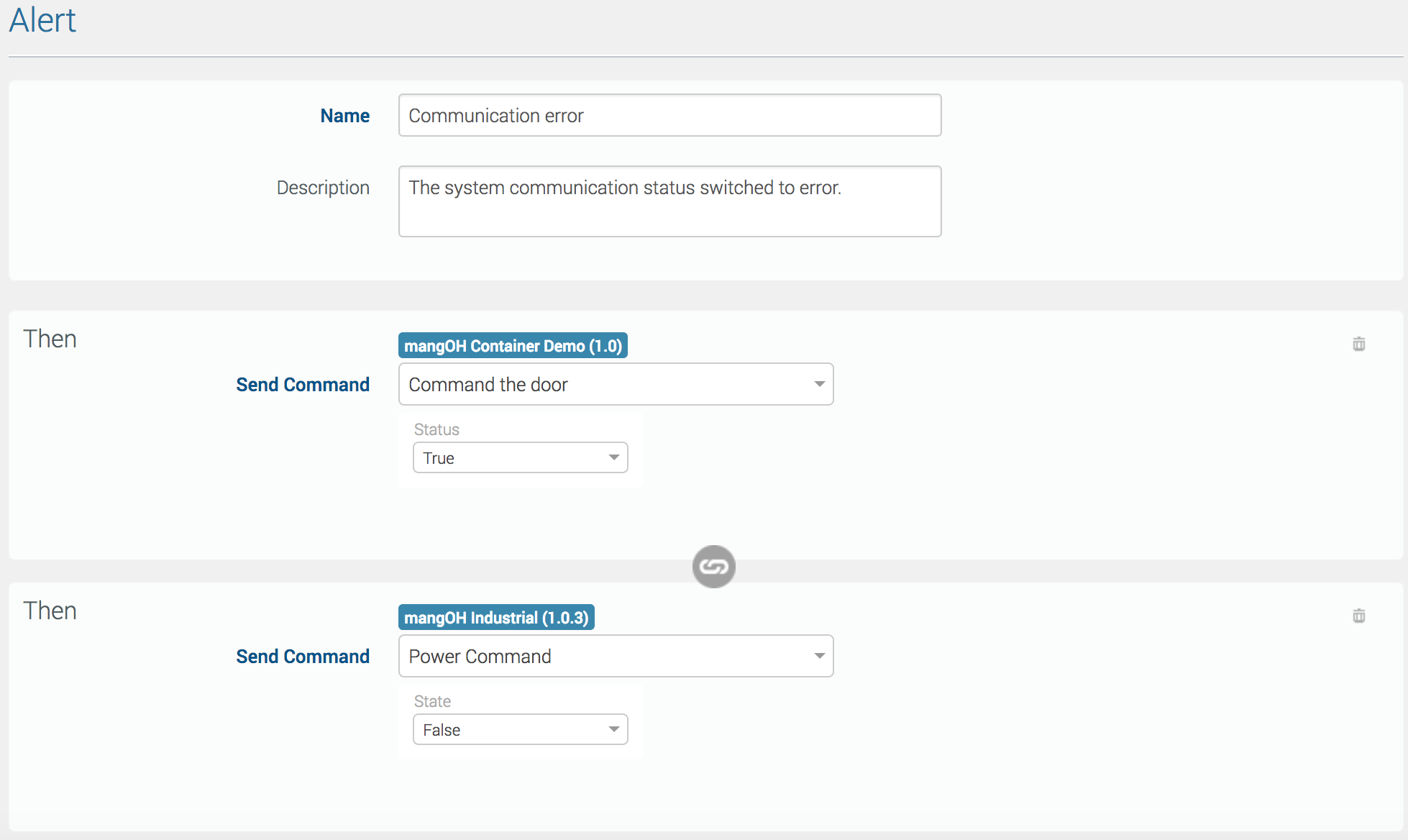Configure
The Configure activity helps you to create and manage templates, system datasets, alert rules, labels, groups, certificates and zones.
 Initializing Table Of Contents...
Initializing Table Of Contents...The activity has the following sections:
- Templates: create, edit, import and review templates used to configure systems.
- Datasets: create, edit and review datasets used to retrieve on demand or periodically data from the systems. Datasets are also used to export data from AirVantage to .csv files.
- Alert Rules: create, edit, activate or pause alert rules
- Labels: create or delete labels
- Groups: create, edit or delete groups
- Certificates: deploy and manage device certificates
- Zones: create or import zones for reporting
The availability of these sections may vary according to your account settings.
Templates and Datasets Sections
The Templates and Datasets sections provide lists of example templates and datasets that you can customize to meet your needs. To create a Template or a Dataset, see the How Tos section at the bottom of the page.

Alert Rules Sections
What is an Alert Rule?
An alert rule is simply composed of a set of up to 10 conditions. The alert will be raised if all conditions are satisfied.
You can create 2 types of alert rules depending on the template chosen:
- For stateful alert rules, once the alert criteria are met, you will receive a notification when the alert is raised for a system, and then when the alert is over and the system working back the expected way.
- For stateless alerts, once the rule is created, you will receive an event each time the condition is met. This is usually the kind of rule that is created when you want to know that something ‘changes’.
Please watch this video tutorial for an overview.
Some alert rules templates are proposed to you as examples with pre-filled conditions to create your own alert rule by changing values or adding more conditions. The custom template is a template without any pre-filled conditions.
This video tutorial shows an example of configuration, that raises a “Communication status goes to error” alert and sends an alert email when your system communication goes to error.
Below is another example that raises a “Monthly invoiced data usage exceeded” alert and sends an alert email when a system exceeds 200Mb data usage in the current month. Note that you can change the period on which the usage shall be aggregated and also the type of usage that is taken into consideration.
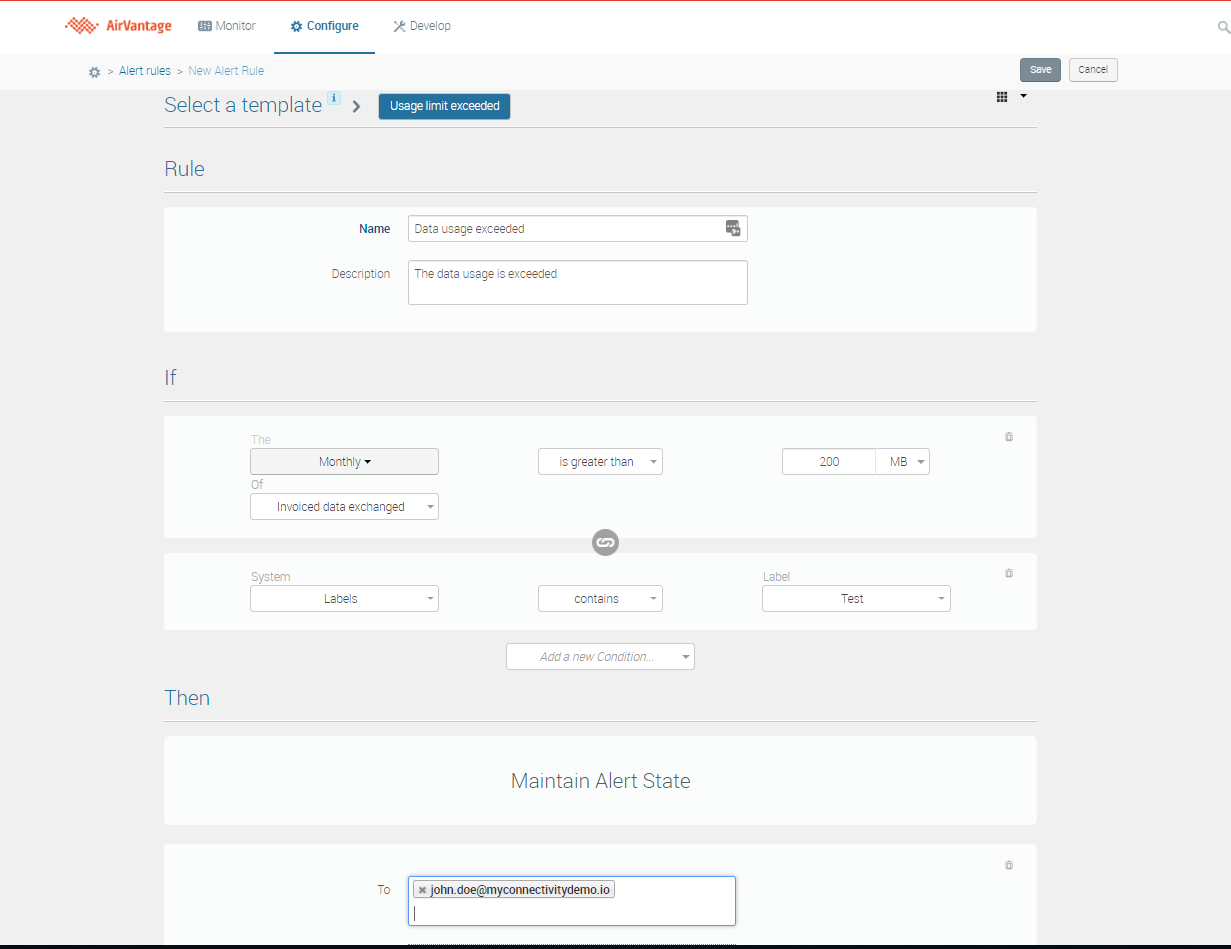
By default an alert rule applies to all the systems within the company. If you want to restrict the alert rule to some systems only, this can be done by adding to the alert rule a specific condition on the system (see tables above). Here are some examples of use of the system condition in the alert rule:
- With ‘System is’ and select the system of choice to have the alert rule on 1 system only
- With ‘System has label’ and then choose the label of choice to have the alert rule on part of the company fleet only.
Take an action on alert
When creating or editing a rule, you can specify one or more actions to be launched on the specific system that causes the alert to be raised (i.e when the rule’s conditions are all met). The action will be triggered as soon as the alert is raised and on the one and only system that was at the origin of the alert.
For some actions (send command, apply setting) an action can also be applied when the alert is cleared (i.e when the rule’s conditions are not met any more). The action that can be taken when the alert is cleared can be different than the ones when the alert is raised.
See below 2 examples of use cases that benefit from taking different actions when the alert is raised and then cleared:
Use Case 1 If my month to date airtime consumption is over 10 GB, then apply an AirVantage template that will throttle my data usage on the device.
At the beginning of the next month (when the alert criteria are not met any more) apply a second template to unthrottled the device.
Note, in this situation it is critical not to disable communications entirely, or the device will not be able to communicate with AirVantage to remove the new template when the alert rule clears.
Use Case 2 With this single alert rule, the device can manage the temperature of the environment:
If the outside air temperature measured by my device and sent to AirVantage is higher than 30°C then raise an alert and send the command ‘open the roof window’ to the device. When the alert is cleared (i.e. the temperature drops below 30°C), then send the command ‘close the roof window to the device.
Actions
The actions that can be triggered are:
Send an email
You can decide whether or not to receive an alert notification by email (for more information, see How to configure an alert rule? ).
Call a callback URL
When creating or editing an alert rule, you can specify one or more urls that will be called every time the alert is raised. Those webhooks permit to inform a third party application about the alert raised in AirVantage.
Webhook is a stateless mechanism and messages are sent in JSON format with the content-type “application/json”. Messages sent to an unreachable endpoint will be lost.
Send Command
This action sends a command to the system which raised the alert. The command will be get by the system in the next device’s communication with AirVantage.
You can define one or more Send a command actions.
Apply Settings
This action applies a pre defined template to the system which raised the alert in order to configure your machine according to the context (initialization, local user action, new local status, issue detected).
This template will be applied in the next device’s communication with AirVantage by writting all the settings included in this template.
You can only define a single Apply settings.
System suspend
If you wish to suspend systems that are overconsuming or if you suspect fraud for example, this action can be of interest to you. With template ‘usage exceeded’, if once your system is suspended you want to reactivate it within the same month, you will need to act on the system to avoid suspension again: either to change the offer on the system (and use the condition ‘system has offer’ in the alert rule configuration) or to play with labels and the ‘system has label’ condition.
Changing offer
To switch to a higher rate plan if your system is consuming more than expected. This change offer action shall be used in conjunction with the ‘system has offer’ condition.
Apply label
You can apply a label on systems that have raised an alert on a specific rule. The label will be automatically removed when the alert will be cleared. This can be used for example to identify from the grid all systems being on alert on a specific rule.
Labels Section
The Labels section displays the list of labels created for the company you are working on. User-defined labels can then be used to group entities like systems, for instance in matching conditions for alert rules.
To create a new label, click the + button.
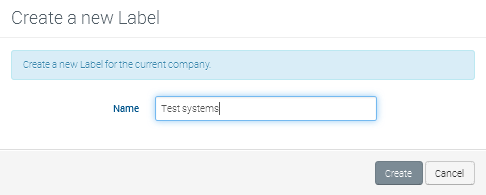
Groups Section
In the Groups section, you can configure, edit or delete groups, which are groups of systems that share common attributes in order to better visualize, organize and configure your fleet. For more information, see How To Use Groups.
Certificates Section
In the Certificates section, you can deploy and manage certificates on your AirLink OS1-powered routers. For more information, see How to manage certificates.
Zones Section
In the Zones section, you can configure zones for use in your report definitions. For more information, see How to create a zone.
How-Tos
This section provides you with helpful procedures for common tasks.



